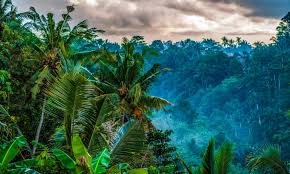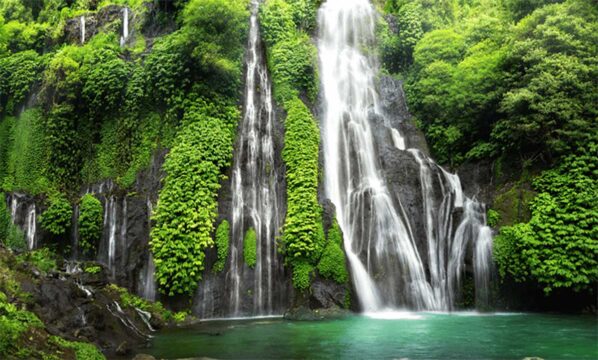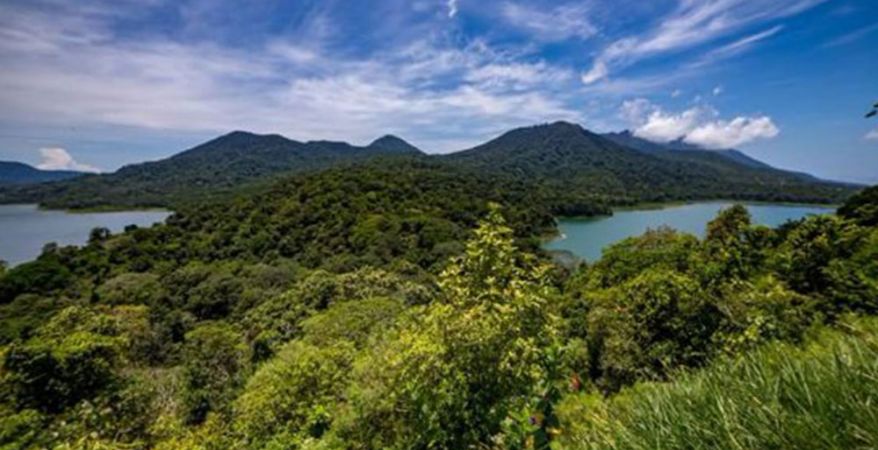Bali, an international tourist destination, is facing increasing pressure to convert land areas initially dedicated to conservation purposes to the new “use” designation of “Agrowisata” or agricultural tourism. As a result of this trend, tourism domination of previously untouched lands contributes to Bali’s denigration and destruction. It accelerates the extent and intensity of Bali’s growing water crisis.
Bali’s tourism is not in an ideal state. I Made Iwan Dewantara, the Manager for Conservation International Indonesia, said on Monday, 26 August 2024: We are opening new areas for tourism by exploiting jungle areas. Where is the logic in this? Our land is being decimated and destroyed. The need for conversation of natural lands has become acute; there is a water crisis. What good does Bali derive from tourism? These developments contribute to the larger economy, but for what purpose if Bali’s future is threatened?
Indonesia promulgated the Forestry Law Number 41 of 1999 to protect and prevent the destruction of native land areas.
As a result, many areas were declared as conservation forest areas, “This allowed the Nation to do what it likes in forested areas. How will the Nation be able to manage this important natural resource for the People’s and the Country’s benefit,” said Dewantara,
The People have placed their faith in the Country to manage the forests. However, in reality, the Country cannot successfully manage its forests.
People living in forested areas are being marginalized. This development has fostered a large number of cases of human rights violations.
Examples of this dilemma can be found in Bangli, Kintamani, and Tamblingan, where, on a normative level, areas initially declared as “protected conservation zones” are given over to limited use for tourism.
“For instance, a 10-hectare conservation concession grants the right to develop some 10-20% of that area for tourism purposes with the balance left in its original protected state. While the Nation wants to protect its forests and jungle, the reality is that it needs money. As a result, the local public’s rights are ignored in these natural areas.” the well-known conservationist stated.
Dewantara asks: “If the government is truly serious (in protecting conservation areas), why not transfer the right to operate these “agrowisata” projects to the local people? Why must (outside) investors be allowed to descend into these zones when the law allows the local public to seek permission to utilize these resources? In reality, the public is never given this opportunity.” He explained that the need for money causes people’s rights to be denied, with the resulting investment project damaging forests and trampling over the local public’s interests.
Finally, he lamented that the people no longer trust the government.
Arguing the case further, Dewantara contends that the local populations, community groups (LSMs), and academics must be called upon to conserve these areas and maintain their economic usefulness. “Publically expose what will be built in these areas, who is doing the development, and exactly what is being done,” he said. “To what extent are the interests of the local public benefited (by such investments), and to what extent will the interests of the forests be protected and preserved?”
The conservation expert said that Bali’s “forest cover” is not ideal and should constitute 30%. Meanwhile, government data estimates that only 23% of the land is currently forested, which is doubtful because many “forested areas” have no tree growth.


“In reality, the 23% figure on forested land includes areas such as Batur with no trees or minimal forest growth. These ‘forested areas’ include the slopes of Mount Agung, near the northeast side of the Village of Kubu, which has few trees and is not the verdant forest scene we imagine. We have ‘forested areas’ with no trees that do not function as jungle,” he said.
With Bali’s less-than-ideal forest cover, it becomes critical that the remaining forested land be carefully preserved and protected. No further diminishment of forest cover on the Island can be allowed. Vacant landscapes must be reforested.
Bali is a tiny island that is acutely sensitive to any change in its forested areas. Forests and jungles reabsorb water. If this absorption and natural recycling process is disturbed, the implication for all regions of Bal is a water deficit.
Dewantara insists that existing forest areas must be protected and expanded to include “traditional forest lands” mandated by religious practice and considered part of the island’s green cover. There are forested areas owned by traditional societies in Bali that should be declared “traditional forests” instead of “protected conservation areas. If these lands are claimed as the property of the State, they then become vulnerable to decimation through investment projects.
In addition to traditional forested lands held by villages, there are also gardens owned by the public and used to plant coffee and cloves. These gardens need to be expanded and given incentives so that they are safeguarded by the surrounding communities and preserved for those communities’ economic benefit.
Related Links
In Bali, The Early Worm Gets Eaten
5 National Parks in Bali and Nusa Tenggara
Editorial: Back to Basic Agriculture
Bali Mountain Lakes Running Out of Water
Agriculture & Tourism: Friends or Foes?
Stay Informed on Bali Tourism-Related News: Subscribe to Bali Update

